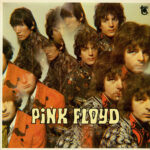With its long history and significant artistic accomplishments, classical music has made an enduring impression on the music industry. Its influence permeates a wide range of musical genres and styles, far beyond the confines of its own genre. Classical music has been a source of inspiration, a foundation for compositional methods, and a doorway to musical invention for genres ranging from rock to jazz, from pop to film scores. We will examine significant examples that highlight the continuing legacy of this age-old art form as we study the enormous effect of classical music on other genres in this article.
Rock music
Although classical music and rock may appear to be very different genres, there is no denying the impact of classical music on rock music. Rock anthems by groups like Queen, Led Zeppelin, and Deep Purple have reached new heights thanks to the addition of classical elements to their music.

The famous Queen song “Bohemian Rhapsody” is a great example, with its operatic parts and intricate vocal harmonies. The structure of the song is similar to that of a classical aria, with distinct portions including the opening ballad, the operatic middle section, and the soaring guitar-driven conclusion.
Jazz
Classical music has had a big impact on jazz, a genre renowned for its improvisational style. Innovators like George Gershwin and Duke Ellington effortlessly merged jazz and classical elements, giving rise to the “Third Stream” style. This fusion is best demonstrated by Gershwin’s “Rhapsody in Blue,” which combines elements of jazz and classical music to create a revolutionary work of art. It has a concerto-like structure to the song’s structure, with a distinct solo piano entrance, several thematic developments, and a triumphant orchestral climax.
Film Scores
The influence of classical music on film scores is immense. In order to create memorable and moving soundtracks, renowned composers like John Williams, Hans Zimmer, and Ennio Morricone frequently used classical methods and motifs. For instance, the use of leitmotifs, a technique frequently used in classical operas, distinguishes Williams’ compositions for the Star Wars series. Instantly recognized, the “Star Wars” theme has a symphonic framework and includes distinctive melodic motifs that stand in for various themes or characters.
Pop Music
Pop music may not seem to be instantly associated with classical music due to its emphasis on appealing melodies and hooks. However, a lot of pop musicians have drawn inspiration from classical music over the years. Consider the string quartet arrangement in the Beatles song “Eleanor Rigby” which is reminiscent of classical chamber music. The song has a narrative framework, with verses outlining the life of the title character and a chorus offering a moving meditation on isolation and interpersonal connection. The use of classical instruments in the arrangement makes the song more sophisticated and complex.
Electronic Music
Classical influences can even be found in the field of electronic music. Classical melodies and symphonic soundscapes have been easily incorporated into electronic compositions by musicians like Jean-Michel Jarre and Vangelis. For instance, “Chariots of Fire” by Vangelis features a strong and lyrical main theme that is influenced by traditional symphonic compositions. The verse-chorus style of “Chariots of Fire”‘s song structure places the song’s main theme in the center, surrounded by ethereal electronic components.
Conclusion
The fact that classical music has influenced other genres is evidence of its continuing strength and persistent allure. Classical compositions, which have served as a source of inspiration for genres like rock, jazz, pop, film scores, and even electronic music, have shaped the fundamental framework of modern music. Artists from various genres have incorporated classical aspects into their work through their creative processes, boosting the complexity, emotional resonance, and depth of their works.
Classical music continues to be cross-pollinated with other genres in a lively and dynamic process, illustrating the adaptability and diversity of this art form. The influence of classical music’s fundamental ideas will definitely endure as new genres and styles develop, leaving an enduring legacy in the music we make and treasure. Artists have broadened the boundaries of their own genres by embracing classical influences, enhancing the musical landscape for future generations.














